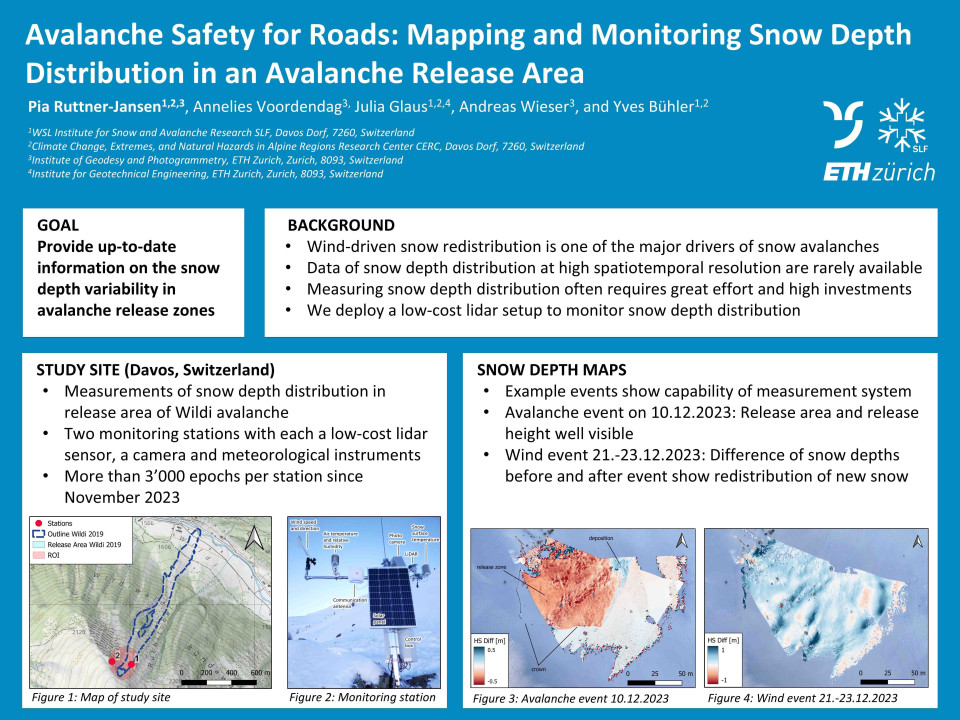Avalanches are a danger to people and infrastructure in mountainous regions. There are different risk mitigation measures, such as avalanche defence structures, artificial avalanche releases, hazard indication maps or the temporary closure of traffic routes. The latter, for example as closure of roads can have a drastic impact on people and economy. The aim is therefore to have the closure as short as possible, but still as long as necessary. The decision on whether to close or open a road is taken by local experts, relying on the weather forecast, the avalanche bulletin, if available, local weather stations and most importantly on their personal experience. One important factor influencing the assessment of the situation is the amount of wind-blown snow in the slopes, which can be derived from the spatial variation of snow depth. However, up to date data with high spatial resolution is rarely available.
In this project we present our newly developed system, that is mapping and monitoring the snow depth distribution in an avalanche release area with high spatial (cm-dm) and temporal (hourly) resolution. The main sensor is a laser scanner, which is permanently mounted on a measurement mast, covering an area of approximately 14’500 m². Additionally, we are using a camera for a visual impression and interpretation of the processes in the monitored area. The measurement mast also contains several meteorological instruments (wind speed and direction, relative humidity and air and snow surface temperature), which are needed for snow depth modelling approaches. The measurement system operates fully autonomously, transferring the data to a local server in (near) real time. As a first test case we installed two measurement masts to monitor the release area of the “Wildi” avalanche, at Brämabüel, the north side of Jakobshorn in Davos in October 2023. The Wildi avalanche can reach the road in the Dischma valley, which had to be closed several times in the past years.
After the first operating season we are able to show snow depth distribution maps with high spatial and temporal resolution. Our analysis shows that we can quantify small temporal changes of average snow depth between measurement epochs for small areas (1m²). This includes several avalanche events, where we can estimate the release depth and volume. A comparison with state-of-the-art snow depth distribution mapping, using photogrammetric drones, shows a good agreement on a low cm level.
The newly developed system and continuously build up snow depth database delivers a unique dataset from an avalanche release area. Using the additionally recorded meteorological parameters we are working on modelling approaches to predict the snow depth distribution at arbitrary times and also upscale to other and larger areas. The obtained information from avalanche release areas is crucial for the further development and refinement of avalanche simulation approaches. All information is planned to be available on an information platform to aid the practitioners in their decision on road closures and openings.
